After 24 hours cooped up in Panache's cabin due to cold rain I came to two conclusions: Eric and I spent too much time scampering around the cabin setting down bowls to catch leaks, and that we were ready to return Panache back to southern latitudes. Our first destination was Santa Cruz Island, about 20 miles west of the Ventura coast. On the previous days' sails, we had come within 15 miles from reasonable anchorages on Santa Cruz, so committing to the remaining miles should be no problem, especially if we got an early start.
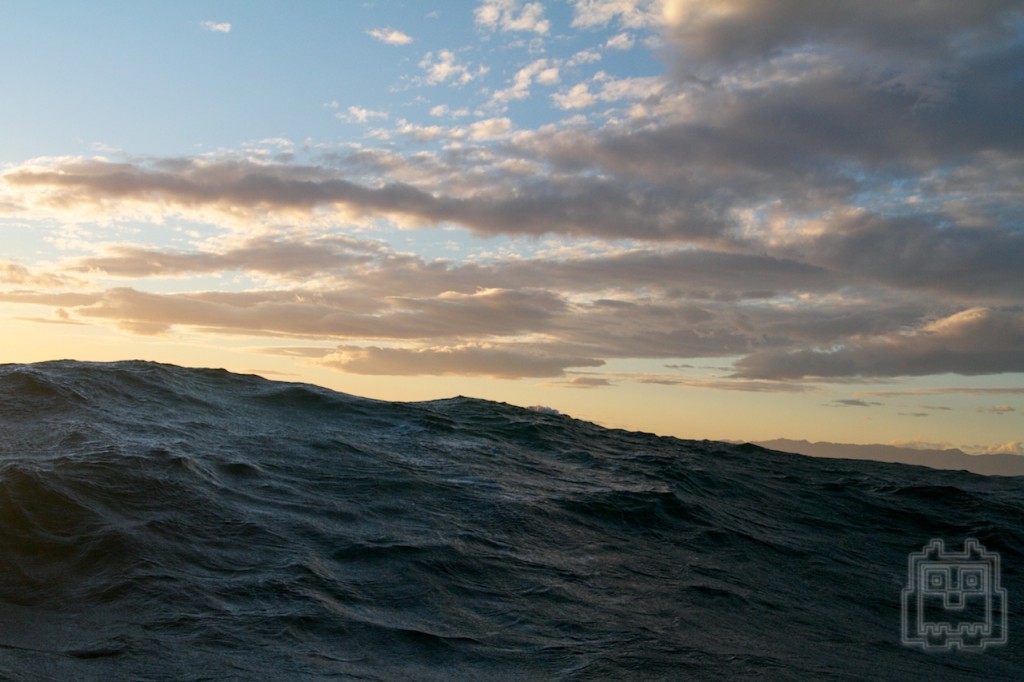
Tony came by one last time to see us off. I really can't thank him enough for walking Eric and I through all the systems on Panache. He really spent the time making sure we would treat her with the same care and respect he did. Tony was the original owner, made all the upgrades himself, and sailed the boat to some of the most beautiful places in the world. HIs relationship with Panache is undoubtably a personal one that must be really hard to let go of. It's like selling the family dog - you want to make sure the new owners are not going to abuse or eat the dog. Tony was originally keeping Panache all these years to set sail one more time for the Pacific Islands. I could tell he wanted to go sailing with us, but he had a golden excuse "I'm too old." Well Tony, if you're reading this somewhere, and change your mind, know that there is plenty of room aboard Panache (as long as it does not rain again).
We wasted an hour with last minute packing to make sure we don't spill everything in the cabin on the floor again. Just when I thought everything has a secure place, I find something new to stow, and the whole packing puzzle starts over again. The packing puzzle of the century dawned on us when I realized my bike was still on shore. Say goodbye to that early start.
The bike posed an interesting problem. We no longer had keys to the marina, and you need a key to get onto the docks and off the docks. Eric and I spent about ten minutes chatting about nothing, waiting for someone else to come or go. Our thought was that if we timed our walk with someone else's arrival/departure, out of common courtesy, that person must let us out. With a marina housing 50% liveaboards this was a piece of cake. Once outside of the docks, we tried our luck with the Marina bathroom. We were starting to get pretty good at this.
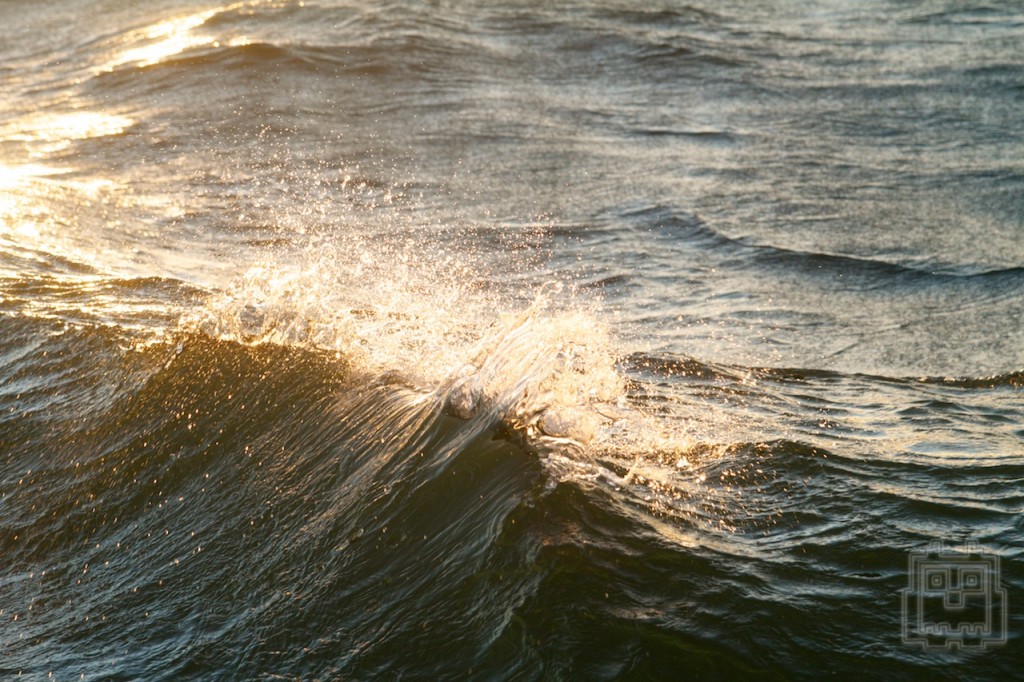
Departing the Marina, our waterline was a little lower and our excitement was a lot higher. One last stop at the gas station. I haven't owned a car for about a year now, and my previous sailboat, well, was a sailboat, so I only bought about 5 gallons of diesel for the whole year I owned her. I am happy to say I don't frequent gas stations. Unfortunately for us, our only source of electricity was the alternator/generator connected to the diesel engine. Once in San Diego I am going to look into solar and or wind power as an alternative. Panache can hold 18 gallons of fuel, and I have a 5 gallon jerry can as backup. The small gas powered outboard also has a little 3 gallon jug to fill. All said and done, our bill fortified my curiosity with alternative energies.
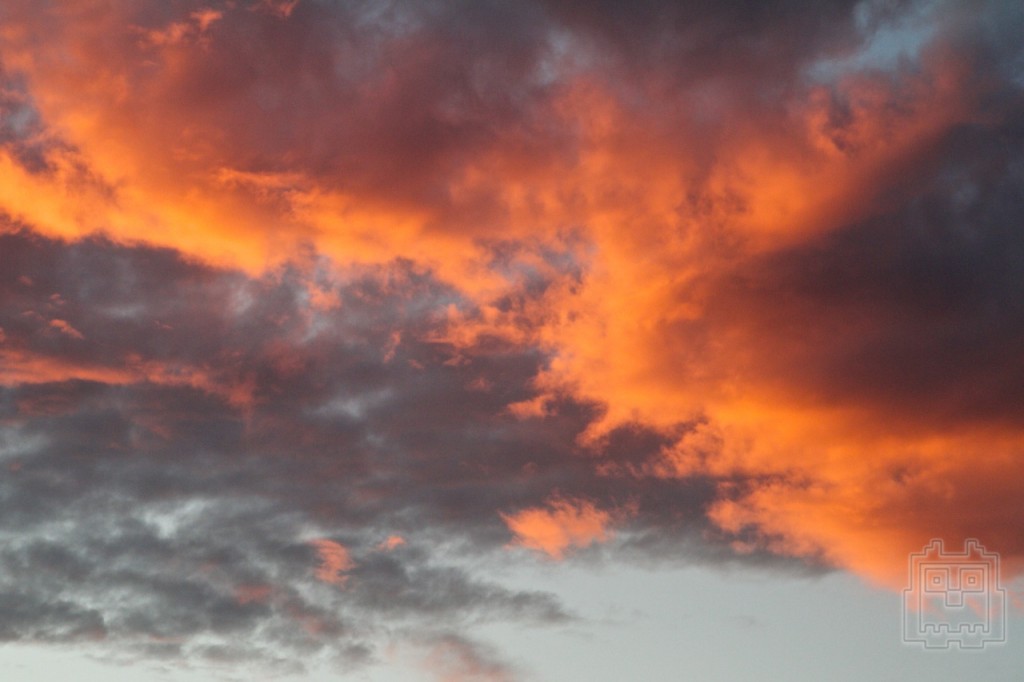
Mike, the man working the pumps asked us "You guys aren't going out are you?" Me and Eric both glanced at each other then back at mike. "Yeah, we were. Is there a reason why we shouldn't?" I responded. "Well, its blowing 20 knots here in the harbor, and if its blowing that strong here, you can bet its blowing a full 30 knots out by the oil islands. You get out there and you will soil your pants and wish you were back in the Harbor. You can tie up to my dock, but it will cost you an thirty bucks." Mike had a good sales pitch, and I did like the current status of my pants, but Eric and I saw this an an opportunity. Most of the time when you encounter bad weather you don't have a choice, we on the other hand, had the choice, time, and mindset to prepare for such weather. Neither of us had experienced wind that strong, but it seemed like a good idea to make the conscious choice to head out in foul weather with a safe harbor only hours away.
Also, Eric and I are cheap. Mike left the offer on the table, and waved us goodbye as we pushed off the fuel dock.
With the Storm jib hanked on, and the main reefed in, we motored our way slowly against the wind and out of the harbor. Traveling the fifty yards stretch to the mouth of the harbor I could feel the wind ramping up, almost like walking towards the sound of loud music - you know its going to be really loud once you get there. Two other larger sailboats were coming into the harbor as we left, both of witch looked beaten from the wind. The smaller of the two had roller furling that was fouled, and the other had all its sails scattered on deck from striking them in a hurry. This didn't phase us, we were ready.
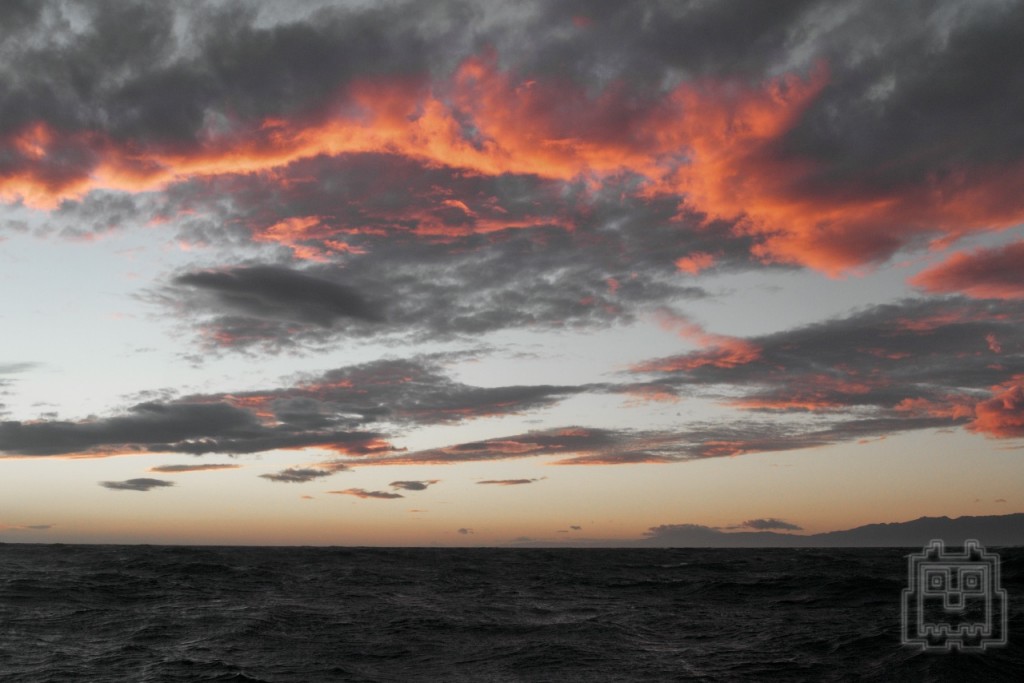
At first it was comfortable - minus the splash that was tearing over the deck. Our reefed main and small jib made for a fast yet barely heeled sail. We were making good time to our destination. The wind was closer to 30 knots out of the harbor, and we weren't even to the offshore drilling sites that split the distance between the mainland and Santa Cruz Island. With wind this intense, it turned the soft splash of water into lead bullets. When the bow dipped into the water you had to turn away to avoid getting pummeled.
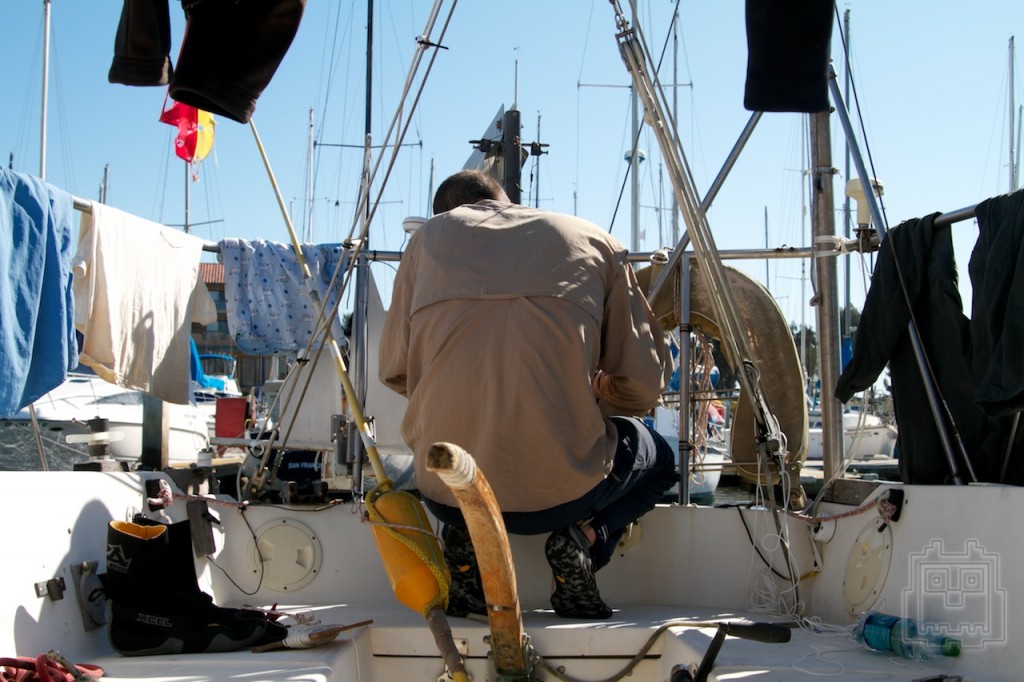
We were sailing fast, but I decided we could sail faster. "Lets take a reef out of the main," I yelled to Eric. We had two reef points on the main, and both dramatically reduced sail area. At that point we had both reefs tied down. Its just much easier to shake out a reef than add one. As Eric started to add the sail area by removing the reef, I headed up into the wind to relive some tension on the main to make it easier to raise the sail. The main started to luff. At this wind speed, luffing was extremely violent. It looked like a dog was shaking the main back and forth in its jaws. In less than a minute of this shaking i could see a small tear developing at the leech end of the top batten. To avoid any further damage, we took the main completely down and substitute the diesel engine.
Motorsailing with just the storm jib, we were able to keep a steady 4-5 knots. But, the direction of the wind prevented us from sailing directly to our anchorage at Santa Cruz. The best we could make was towards Anacapa, about 20 degrees off our intended heading. We held this course until we were about 15 miles from Ventura Harbor. That's when the wind really started to pick up.
We were now nestled between Anacapa Island and one of the oil rigs. The wind was maintaining in the high 30s but we frequently experienced mid 40s and even hit 50 knots of wind. This was considered storm force force wind. Even with eight foot swells the water was being straightened out by the wind, and every splash of moisture that escaped the ocean was immediately shot downwind at 25 meters per second. Because of the direction of the wind requiring us to tack back and forth to our anchorage, we realized we weren't going to make it there by nightfall at this rate. I decided to strike our last bit of sail, the tiny storm jib, and motor straight for Santa Cruz - dead into the wind.
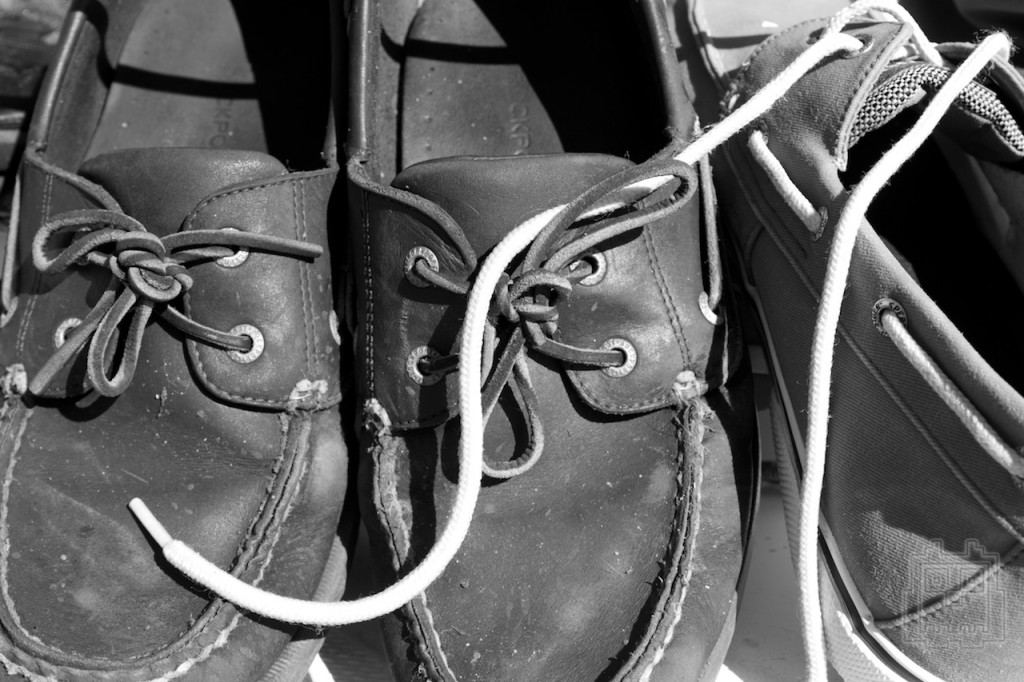
Life vest and harness on I clipped into the steel lifeline that circled the deck (insurance against man-over boards), and slowly made my way to the bow. In the cockpit you don't realize how much the bow of the boat drops when noising into the trough of a wave. At the tiller you can easily ride this drop, but on the bow, you experience a second of weightlessness. Add the pelting of 60 degree water and 40 knot winds makes striking a sail - a simple exercise - quite demanding. I wedged myself between the lifelines, the jib halyard in one hand, and trying to pull the jib down with the other, but the wind was too strong. I pinched the halyard under my foot and used both hands to pull down the jib. After securing the jib to the side of the boat I looked down for the halyard but it was gone. It had wriggled itself free from underneath my foot and sucked back to the winch attached to the mast. If you loose the halyard, it can get sucked all the way up to the mast and is a real pain to get back out. This also renders your boat without a headsail. With our mainsail down we really needed a headsail. I worked myself up and stagger to the mast. Right as I lurched to grab the halyard, a huge rush of wind smacks the side of the boat and pulls the halyard off the winch and out of reach. This kind of stuff only happens in the movies.
Stopper knots, stopper knots, stopper knots. Why didn't I tie a stopper knot!
I stood there for a second and watched the halyard swing around savagely about 6 meters behind the boat. I made my way back to the cockpit and Eric tells me "We should've tied a stopper knot." I agree and hang out over the back of the boat waiting for the halyard to come close enough to grab. I start to smell a burning smell, and realize how much we are overworking the 30 year old engine.
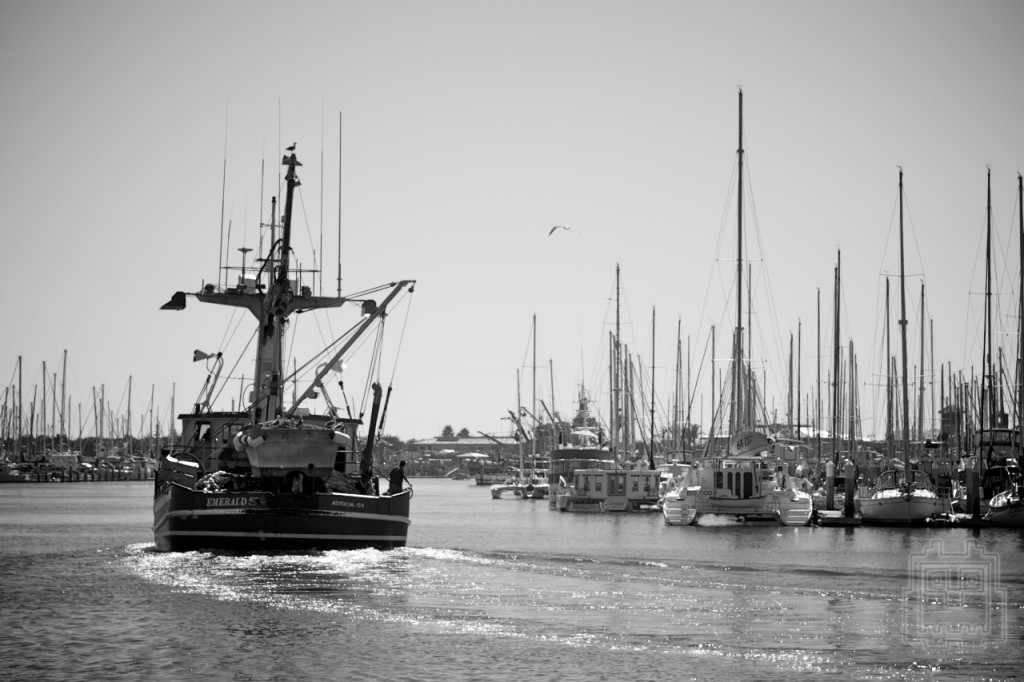
Hopping into the cabin the engine reads over 100 degrees. I throw all the cushions onto the water soaked sole and open up every engine compartment to give it ample fresh air. I read the water temperature gauge and it is slowly lowers. Ok, now back to the halyard. I didn't want to get too close because when the line whips down between gusts of wind it could really cause some damage. Eric was zig zagging back and forth through the wind to give me opportunity to grab the halyard. Finally, on the fifth zag the wind allowed me to catch the halyard and I secured it back to the mast.
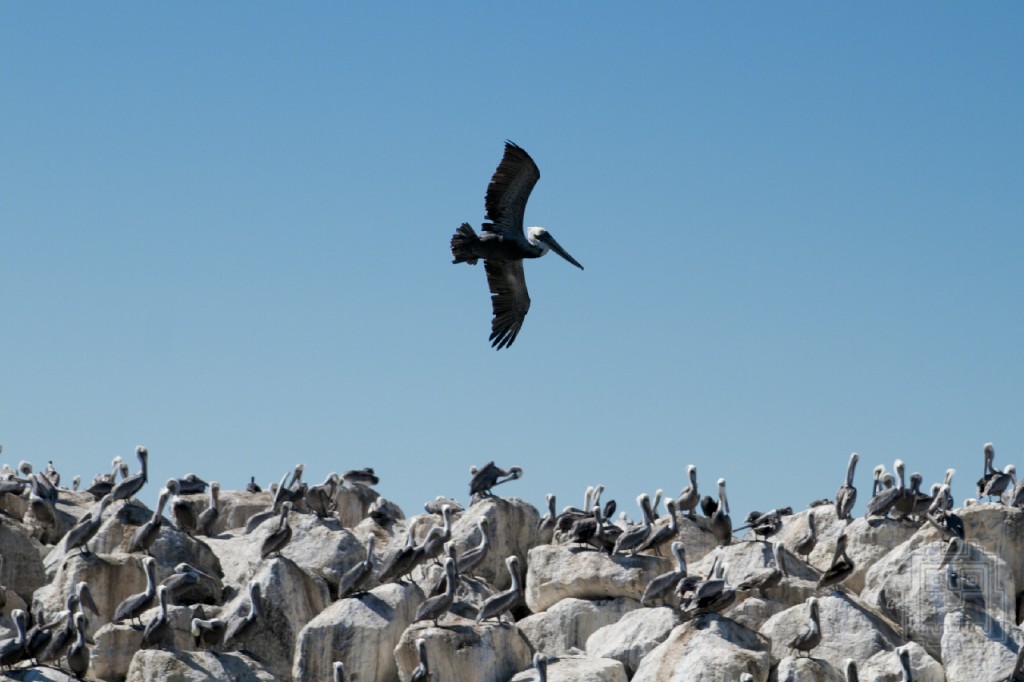
Now that the jib was down and the halyard was safe, we were able to focus on motoring towards our destination. The engine on Panache is a small 12 horse-power diesel with 2000 hours on it. The Yanmar YSB12 has been well maintained, but it doesn't give as much drive as one would like to push through 30 knot winds. We were really straining this old engine, and barely making more than 1 knot towards Santa Cruz. If the bow dipped off the wind the slightest bit, the wind would catch the side of the bow and throw the boat off course, making progress slower, wetter, and more uncomfortable than ever.
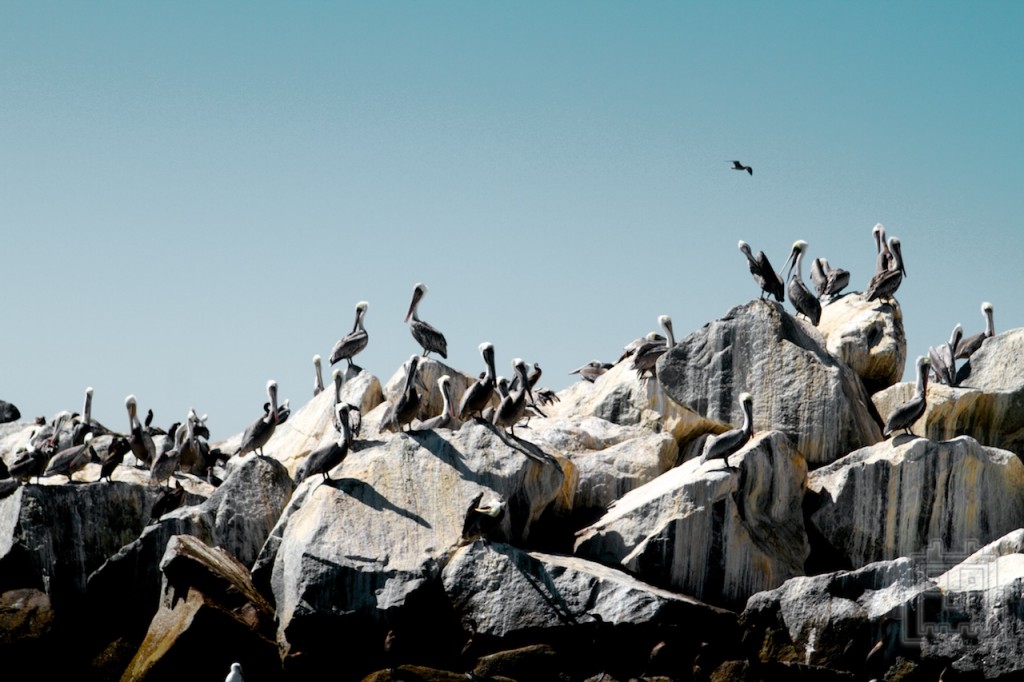
I surveyed the water, our position in relation to our intended anchorage, and the time. I made the call to head back to Ventura. This was disappointing, but ultimately the right call. We hunkered down and motored our way back.
The trip back was just as exciting. Same wind and same swells. We were able to raise the storm jib again. This helped minimize the roll by keeping the boat heeled over to one side. It also let us race down waves hitting 8+ knots at times. We decided to put on our wetsuits because our clothes were completely drenched and our body temperature was starting to fall. The cherry on top of this eventful sailing venture, was the Radar tower toppling onto the backstay. We jimmy rigged it upright, but a permanent fix was going to have to wait until we a calm harbor.

As we entered Ventura Harbor, I realized we had no place to put the boat. Mike's offer at the gas dock was still on the table, but we decided to poach Tony's old slip instead. Like true pirates we pulled into the slip that was untended but unpaid for, and the cleanup began. Neither of us regret going out. Experiencing that kind of weather is inevitable, and I am just glad it was on our terms. There was never a point when either of us felt like we shouldn't have been out there. That's a good feeling considering the conditions.
It looked like we were going to spend one more day in Ventura after all.
awesome